6.1.1.1: Predation
- Page ID
- 36955
Perhaps the classical example of a biotic interaction is the predator-prey relationship. Predation occurs when one species (the predator) kills and eats multiple prey over its lifetime.
Predator-Prey Dynamics
Population sizes of predators and prey in a community are not constant over time, and they may vary in cycles that appear to be related. For example, 100 years of trapping data from North America shows how population dynamics of the lynx (predator) and the snowshoe hare (prey) cycle (figure \(\PageIndex{a}\)-b).
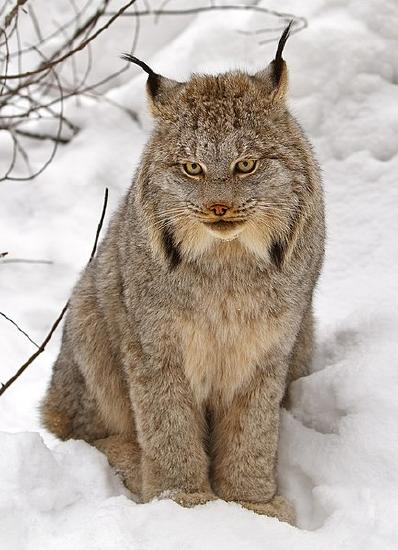
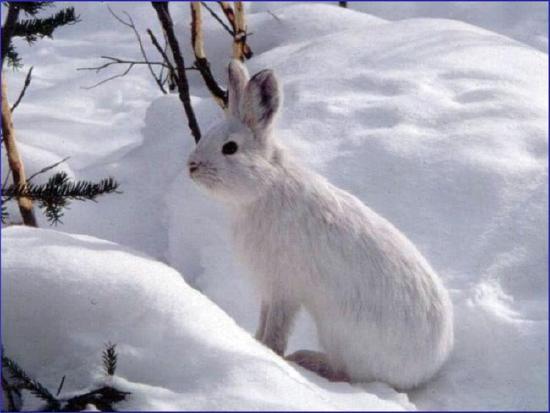
This cycling of predator and prey population sizes has a period of approximately ten years, with the predator population lagging one to two years behind the prey population (figure \(\PageIndex{a}\)-c). An apparent explanation for this pattern is that as the hare numbers increase, there is more food available for the lynx, allowing the lynx population to increase as well. When the lynx population grows to a threshold level, however, they kill so many hares that hare numbers begin to decline, followed by a decline in the lynx population because of scarcity of food. When the lynx population is low, the hare population size begins to increase due, in part, to low predation pressure, starting the cycle anew.
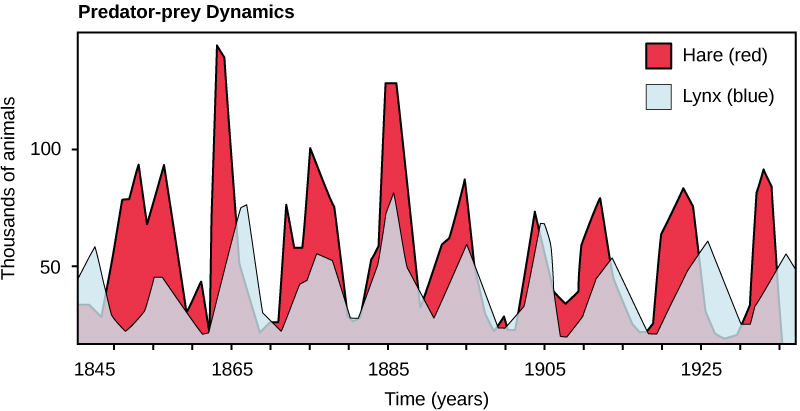
The dynamic of closely matched population cycling occurs because the snowshoe hare is the primary food source for the lynx. When predators have generalists, feeding on a variety of prey species, and prey are consumed by a variety of predators species, their population dynamics are less likely to cycle together.
Adaptations of Predators
Predators have a variety of adaptations to catch and consume prey, and the specific adaptations depend on the predator. For example, raptors, such as owls and hawks, have hooked beaks for tearing flesh and talons for grabbing prey. Mammal predators often have sharp teeth and claws. Some predators can run quickly to chase prey, and others "sit and wait", lunging forward when prey pass them. Some predators, like rattlesnakes and tarantulas, subdue their prey by injecting them with venom (figure \(\PageIndex{d}\)). Predators often have large eyes located forward (like a wolf) rather than eyes spaced far apart on the sides of the head (like a sheep). Forward-facing eyes allow for depth perception, which is key to tracking prey. In contrast, peripheral vision is expanded when eyes are located to the sides, and this helps prey identify threats.
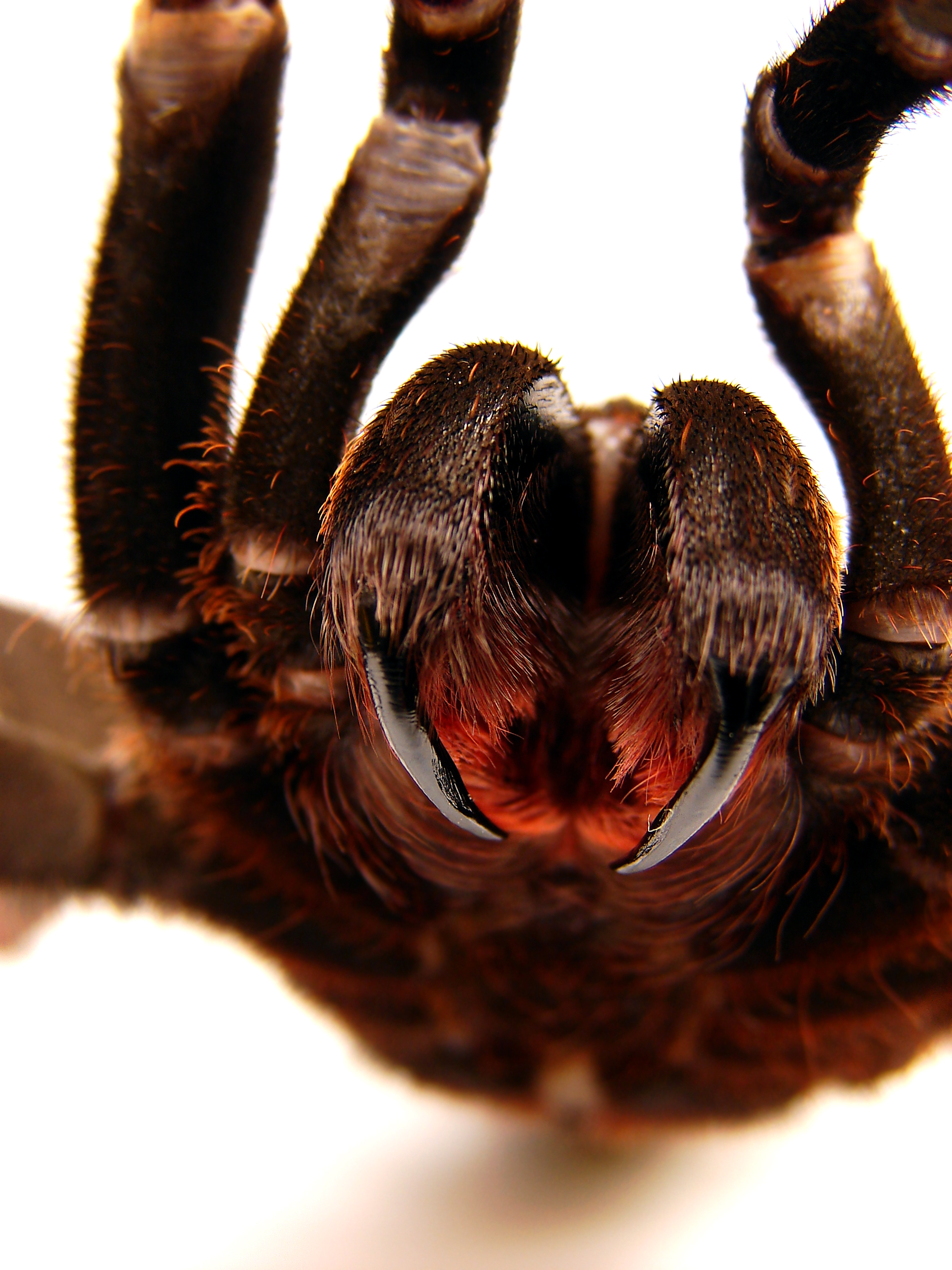
Defensive Traits in Prey
Prey evolve mechanical, chemical, physical, or behavioral defenses against predators. Some prey have armor (such as a turtle shell or the bony plates protecting armadillos), a mechanical defense that reduces predation by discouraging physical contact. Many animals produce or obtain chemical defenses from plants and store them to prevent predation. Other species use their body shape and coloration as camouflage to avoid being detected by predators, an example of a physical defense. The tropical walking stick is an insect with the coloration and body shape of a twig, which makes it very hard to see when it is stationary against a background of real twigs (figure \(\PageIndex{e}\)-a). In another example, the chameleon can change its color to match its surroundings (figure \(\PageIndex{e}\)-b).
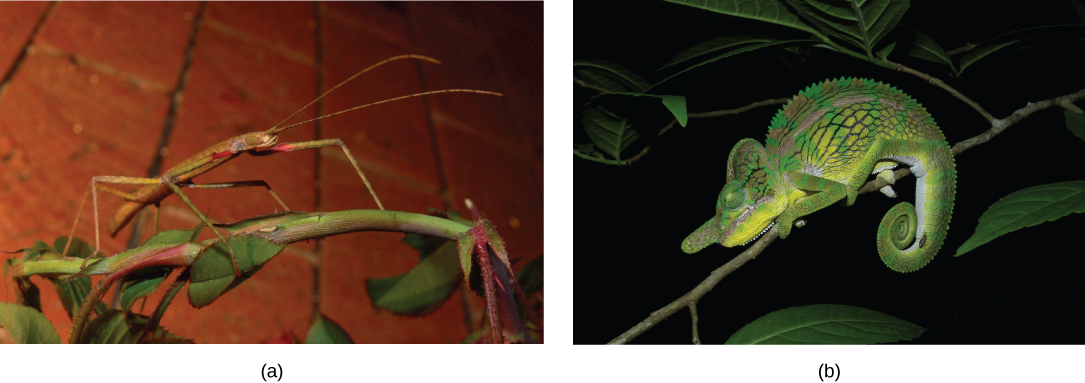
Some species use coloration as a way of warning predators that they are distasteful or poisonous. For example, the monarch butterfly caterpillar sequesters poisons from its food (plants and milkweeds) to make itself poisonous or distasteful to potential predators. The caterpillar is bright yellow and black to advertise its toxicity. The caterpillar is also able to pass the sequestered toxins on to the adult monarch, which is also dramatically colored black and red as a warning to potential predators. Fire-bellied toads produce toxins that make them distasteful to their potential predators (figure \(\PageIndex{f}\)). They have bright red or orange coloration on their bellies, which they display to a potential predator to advertise their poisonous nature and discourage an attack. Warning coloration only works if a predator uses eyesight to locate prey and can learn—a naïve predator must experience the negative consequences of eating one before it will avoid other similarly colored individuals.
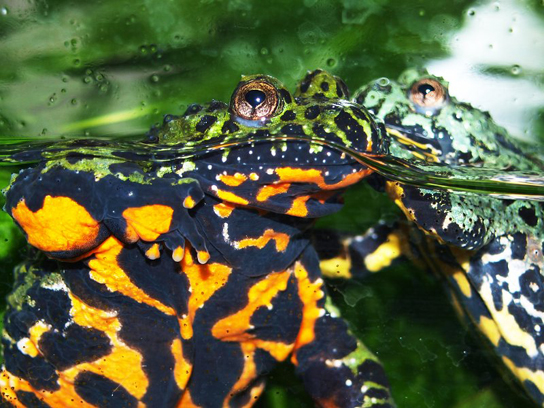
While some predators learn to avoid eating certain potential prey because of their coloration, other species have evolved mechanisms to mimic this coloration to avoid being eaten, even though they themselves may not be unpleasant to eat or contain toxic chemicals. In some cases of mimicry, a harmless species imitates the warning coloration of a harmful species. Assuming they share the same predators, this coloration then protects the harmless ones. Many insect species mimic the coloration of wasps, which are stinging, venomous insects, thereby discouraging predation (figure \(\PageIndex{g}\)). In other cases of mimicry, multiple species share the same warning coloration, but all of them actually have defenses. The commonness of the signal improves the compliance of all the potential predators.
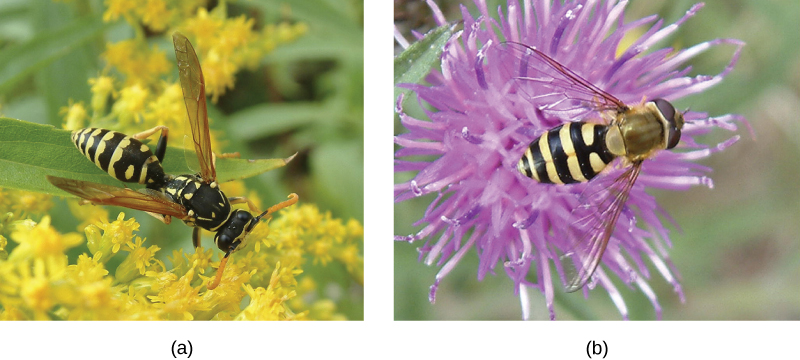
Running from predators, hiding, and playing dead are examples of behavioral defenses. Some prey also exhibit behaviors that threaten predators. For example, snapping turtles stretch their legs to appear larger and snap aggressively at predators.
Attribution
Modified by Melissa Ha from Community Ecology from Environmental Biology by Matthew R. Fisher (licensed under CC-BY)


